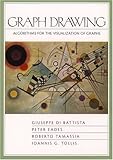Found in 2 comments on Hacker News
harrigan · 2015-07-07
· Original
thread
Graph Drawing: Algorithms for the Visualization of Graphs by Tollis, Di Battista, Eades and Tamassia (http://www.amazon.com/Graph-Drawing-Algorithms-Visualization...). The book is from 1998 but is a good basis for reading future papers and algorithms in this area.


I've been on a journey for a while to understand how to layout diagrams / graphs in an "aesthetically pleasing but structured" way. Long story short, DOT[0] is the best language I've found for defining graphs (compared to doing something with Mermaid.js or any other markup language), but rendering with the DOT engine in GraphViz fails the "aesthetic" test for me.
Did a bit of a literature review[1] to understand better the different approaches, and to understand the scope of the field. This book does great job of defining and providing the keywords for the different levels of requirements, starting with "principles" that are provable in the academic sense, to "conventions" that are like principles, but cannot be necessarily computed (eg NP hard, so requiring heuristics or simulations to achieve), and ending with actual "aesthetics" where things get very subjective.
Ultimately got pretty deep writing my own force-directed graph simulation in Rust and visualizing with egui[2] (needed an excuse to work on UIs and I've always wanted to write less Python), but I'm taking a break to use what I've learned writing Rust to shore up the REST API testing suite for my dayjob.
[0]: https://graphviz.org/doc/info/lang.html [1]: https://www.amazon.com/Graph-Drawing-Algorithms-Visualizatio... [2]: https://docs.rs/egui/latest/egui/